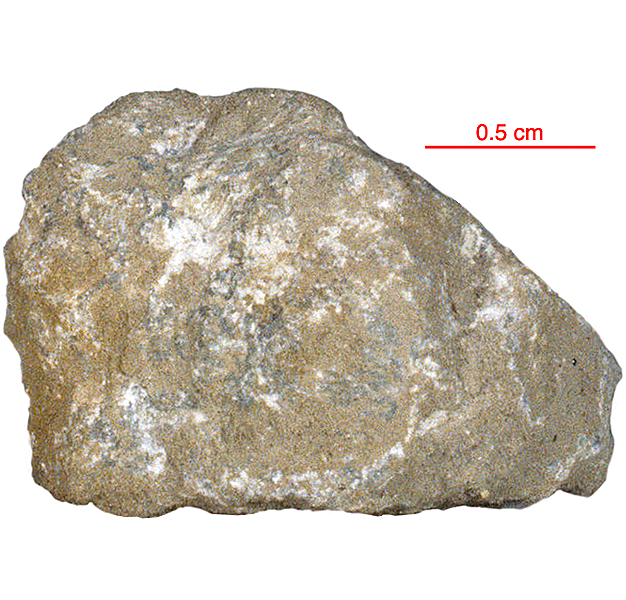
Fact sheet
Lunar sample 15359 is a rake sample that can be compared with impact melt rocks 15356 and 15357. It is a fine-grained micropoikilitic impact melt with many mineral clasts and has a KREEP–like chemical composition. Some mineral clasts appear to have recrystallised (e.g. rotation 1). Pyroxene (pigeonite) and plagioclase feldspar are the dominant mineral clasts. Ilmenite tend to be anhedral, dispersed, and very small. Interstitial glass appears to be rare, although silica and apatite grains are present. Some mineral clasts have overgrowth rims. Rotation 2 shows a large plagioclase feldspar crystal containing what appears to be elongate fluid inclusions. The other fragment is also plagioclase-rich - perhaps a highland anorthosite clast?
The sample weighed 4.2 grams before analysis and has been dated at 3.86±0.16 billion years (Ar/Ar).
Further details of this and other Apollo samples are here: http://curator.jsc.nasa.gov/lunar/
The mounting resin of this thin section has deteriorated over time and now contains clusters of colourful dendrites within and around the thin section.
The Apollo 15 landing site was in the Apennine Highlands, and close to Hadley Rille — a long, narrow winding valley. Approximately 76 kg of lunar material, including soil, rock, core-tube and deep-core samples, were returned to Earth.
This mission was the first flight of the Lunar Roving Vehicle which allowed the astronauts to venture further from the Lunar Module than in previous missions. During three periods of extravehicular activity, or EVA, on July 31st, and August 1st and 2nd, Scott and Irwin completed a record 18 hours, 37 minutes of exploration, travelling 17.5 miles, in the first car that humans had ever driven on the Moon.
Apollo 15 was launched on 26 July 1971.






